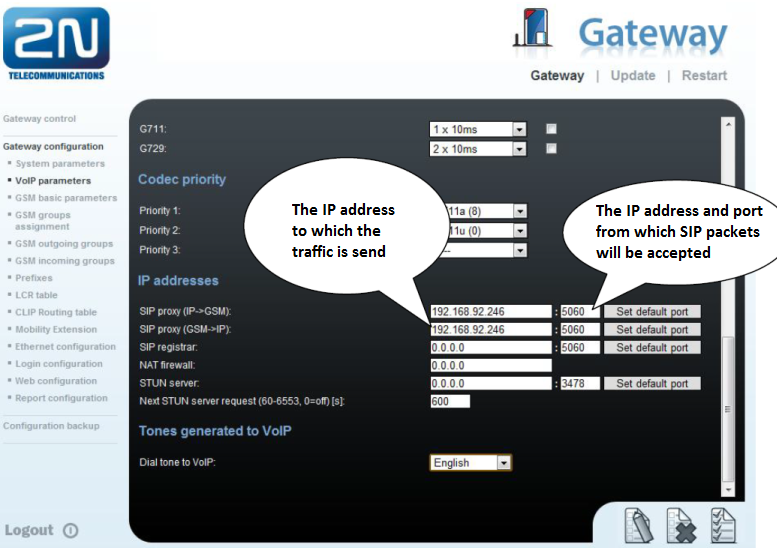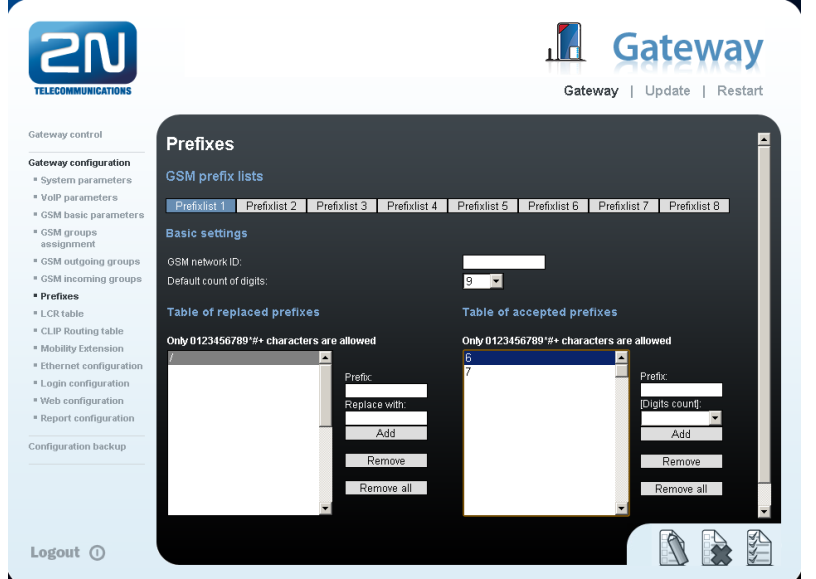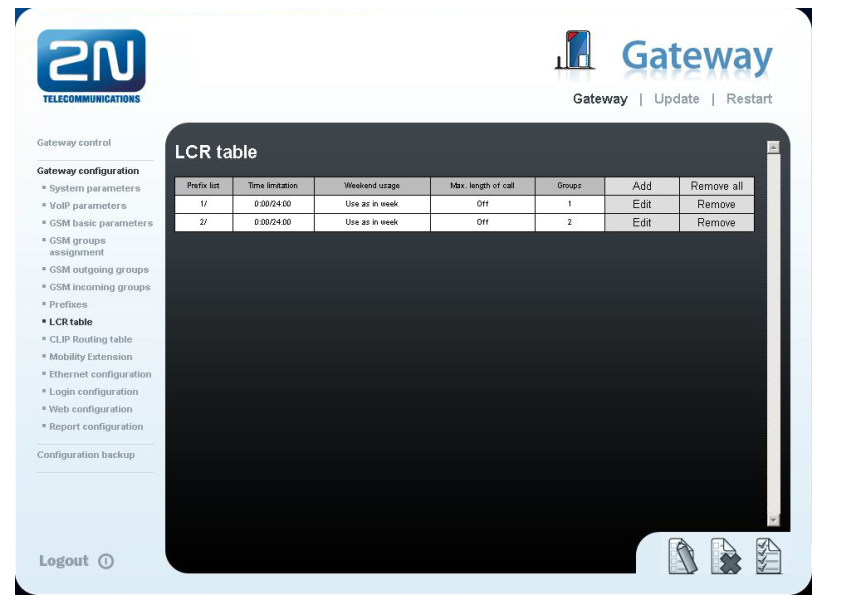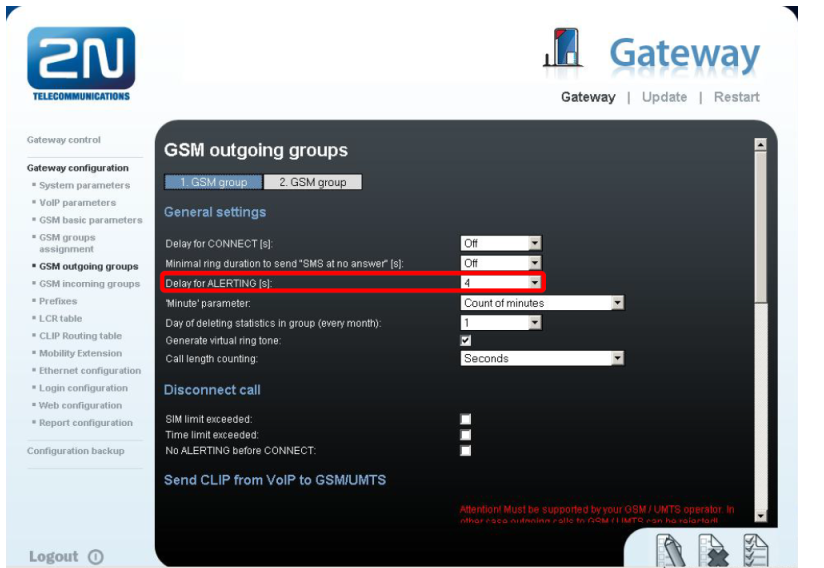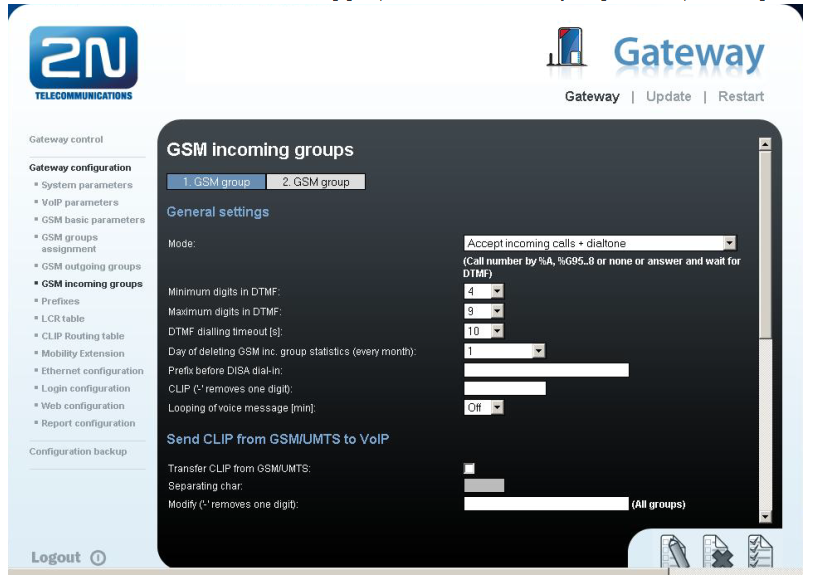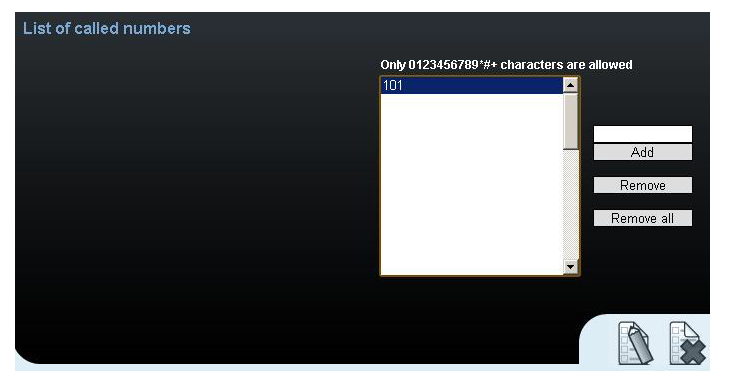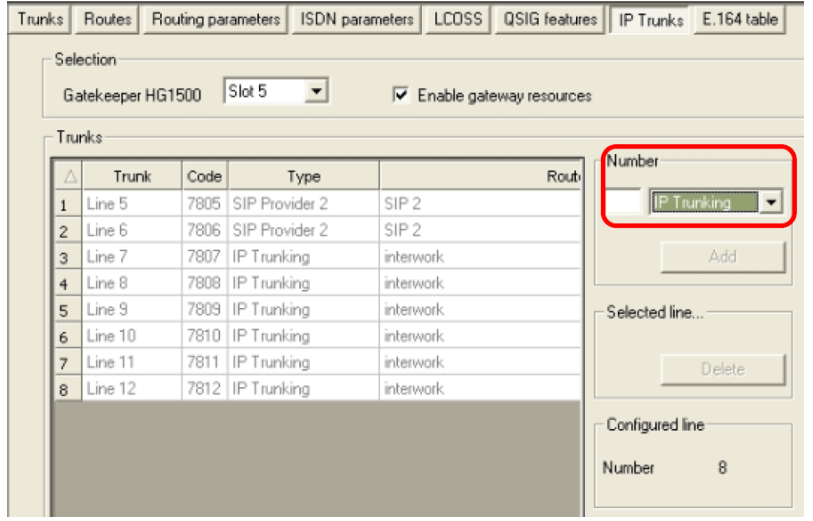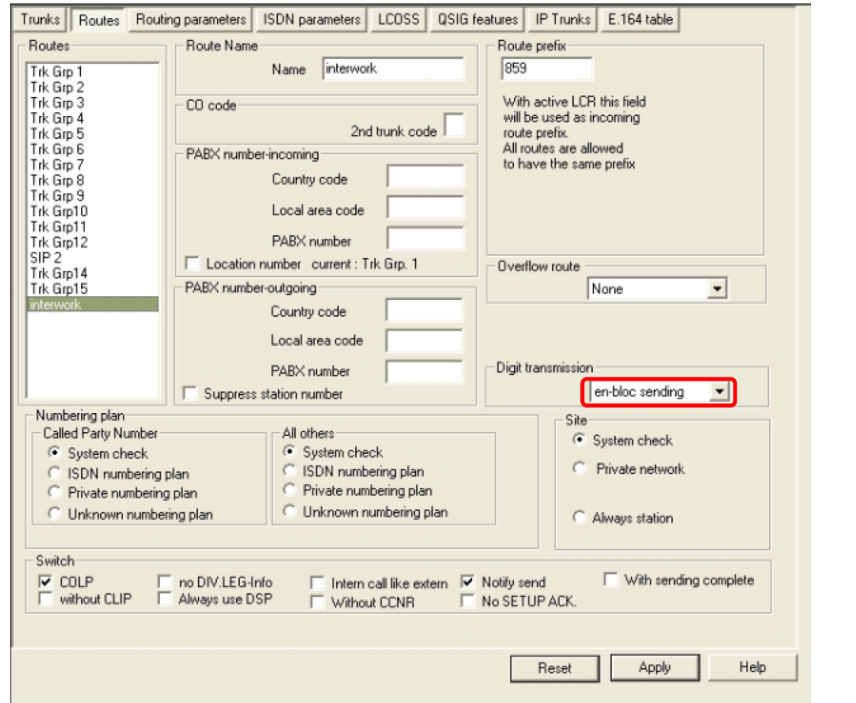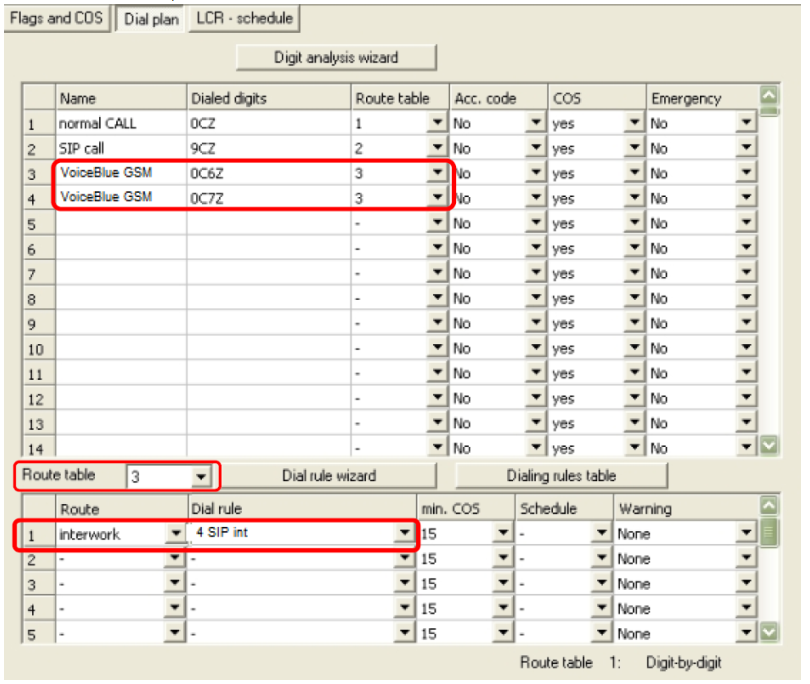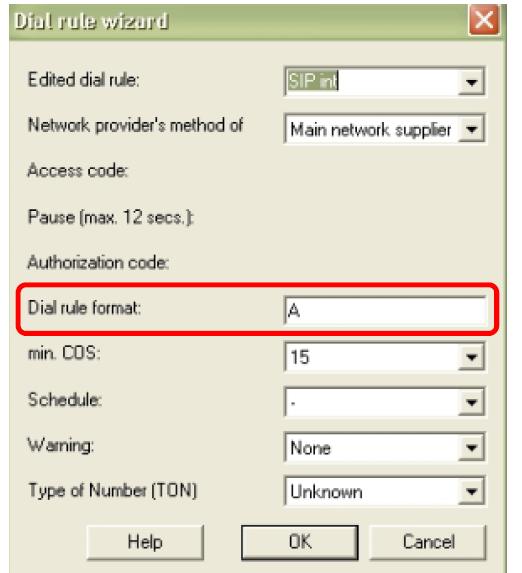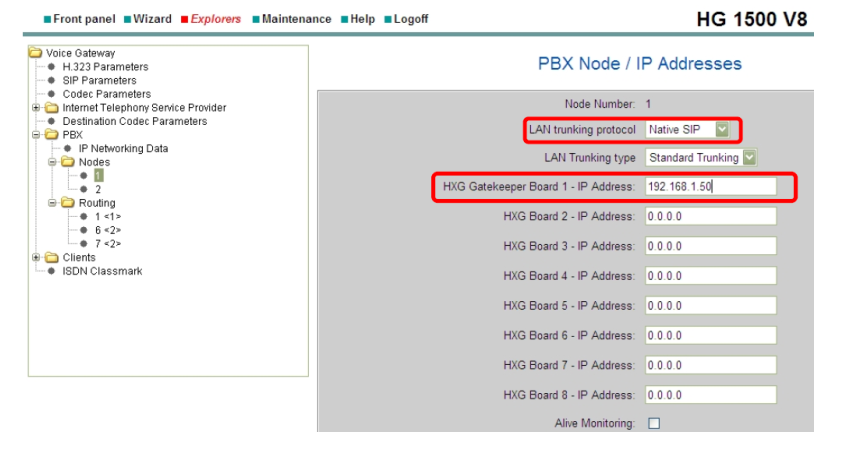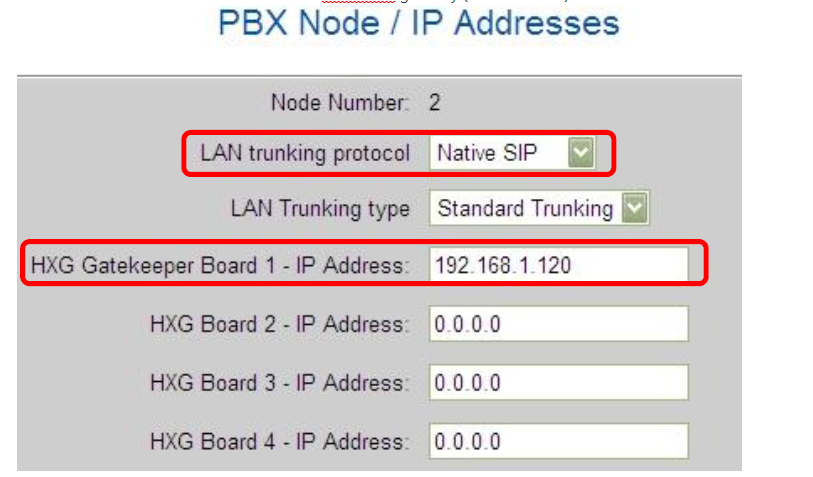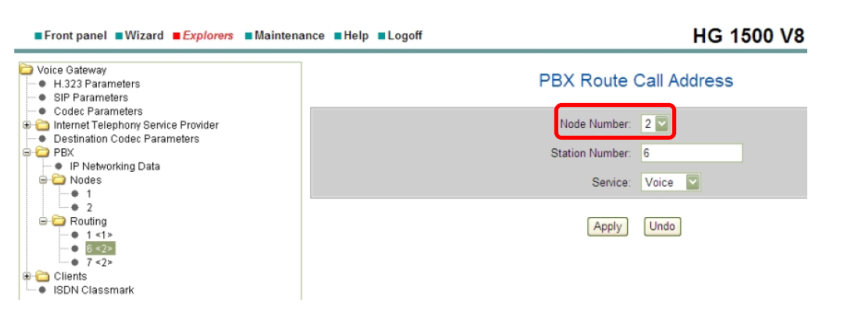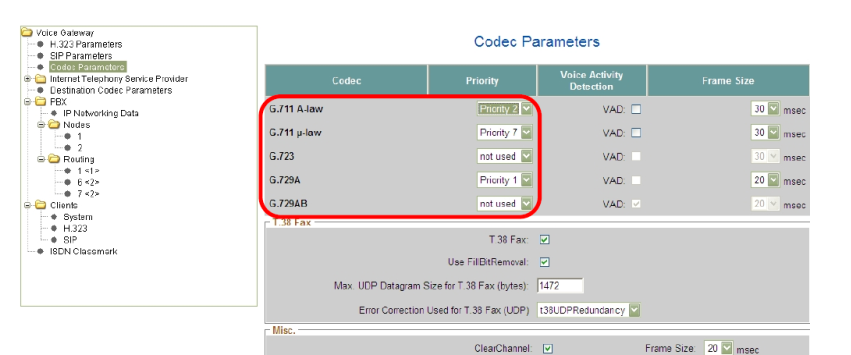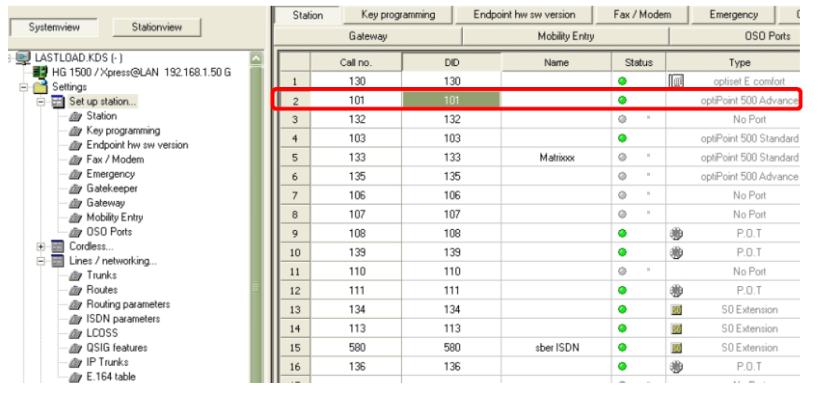HiPath 3000 - How to interconnect with Siemens HiPath 3000?
- 2N® VoiceBlue Next has these parameters:
- IP address 192.168.1.120
- Incoming port: 5060
- Siemens HiPath 3000 parameters:
- IP address 192.168.1.50
- Incoming port: 5060
2N® VoiceBlue Next settings
- SIP trunk interconnection
For the setting of the trunk between the 2N® VoiceBlue Next and your PBX you need to configure SIP proxy (GSM→IP) for GSM incoming calls. SIP proxy (IP→GSM) is designed for secure communication only with traffic from your PBX. You can specify the IP address and port from which SIP packets will be accepted.
In case you leave there 0.0.0.0 it will be open for all traffic. - Configuration of the LCR (Least Cost Routing)
The GSM operator has e.g. in our country prefix 6 and 7 with a 9-digit number. The setting is below.
You need to create LCR rule for defined prefixes. The GSM group defines a way for the outgoing call routing. An appropriate SIM card is selected based on the GSM groups assignment. - Configuration of GSM outgoing groups
You are able to set up different settings for each GSM group (CLIR, free minutes, virtual ring tone, roaming and others). In case you do not have a Ring back tone, set up Delay for ALERTING to option 4. - Incoming calls
For incoming calls you can define 2 groups with the different behaviour and assign them to the GSM modules. The settings are similar with GSM groups assignment for outgoing calls.
In GSM incoming groups you can define the behaviour for each GSM incoming group. Choose the mode to Reject, Ignore, Accept incoming calls or Callback.
You can define the list of called numbers which will be automatically dialled after DTMF dialling timeout if the customer does not press any button within the specified time. From the configuration, you can see 10 seconds for DTMF dialling and after that the call will be routed to the extension 101 to your PBX (if you set up SIP proxy (GSM->IP) in VoIP parameters).
SIEMENS HiPath 3000 version 8.0
- Create a new IP trunk
Add a new trunk - Trunks → IP Trunks
Number of trunks = number VoIP channels
You need to assign IP trunk to Trunk group 16 (always for IP trunk). This trunk is called interwork in the picture below.
The setting of Trunk group 16 is in the picture below.
Important is to use en-block setting for sending of dialled number. - LCR setting in PBX
Enter the menu "Least cost routing" → "Dial plan"
Example setting of Dialled digits:
0C6Z means: 0... prefix for outgoing calls from PBX
C... user get dial tone (morse A)
6... prefix to GSM network
Z... unlimited number of digits
You have to send the prefix to Route table (in our example Route table 3)
Choose your Route table and press "Dial rule wizard". Now you are able to set up Dial rule format A. It means that it will repeat all digits after C (0 will be cut off from called number). - Setting of VoIP card - via web interface (HG 1500 V.8.0)
First of all you need to have licenses for VoIP channels (2 channels should be open as a standard)
Enter the menu: Explorers → Voice Gateway → PBX → Nodes
Node 1 needs to be configured for incoming traffic from 2N® VoiceBlue gateway. This setting is for routing to your own system.
LAN trunking protocol needs to be "Native SIP" and IP address is the IP of the Siemens HiPath 300.
Node 2 needs to be configured for outgoing traffic to 2N® VoiceBlue gateway.
LAN trunking protocol needs to be "Native SIP" and IP address is the IP of 2N® VoiceBlue gateway (192.168.1.120)
Siemens HiPath can check the connection with the gateway by setting of "Alive monitoring". You are able to set it up in Node setting and you can choose PING or TCP IP monitoring. Both methods are supported by 2N® VoiceBlue Next gateway. - Routing
Now you have to set up routing digits to your predefined Nodes.
Example of setting:
Number 6 and 7 are routed to the Node 2. There is a gateway 2N® VoiceBlue Next
Number 1 is routed to the Node 1. This node is for own Siemens HiPath PBX. - Codec setting
Enter the menu Voice Gateway → Codec Parameters
You can set up priorities for codecs.
The Siemens HiPath support DTMF via RFC 2833. - Incoming call from 2N® VoiceBlue Next
In the VoIP card we have already set up routing for prefix "1" to own Siemens HiPath PBX.Currently the number coming from 2N® VoiceBlue Next is compared with DID number and routed to the particular phone.

